Inflating road bike tyres properly is essential for peak performance and a comfortable ride, and at usabikers.net, we want to ensure you’re rolling smoothly. Correct inflation enhances grip, reduces rolling resistance, and minimizes the risk of punctures, so follow our guide to master tyre inflation, valve types, optimal pressure, and more, plus learn why maintaining proper tyre inflation is vital for every ride and how our website supports your biker journey. Road cycling, tyre pressure, bike maintenance, and rider safety are key here.
Table of Contents
- Understanding Your Bike’s Valve Type
- Essential Tools for Tyre Inflation
- Step-by-Step Guide to Inflating Road Bike Tyres
- Achieving Optimal Tyre Pressure
- Choosing the Right Pump for Your Needs
- Maintaining Your Tyres for Longevity
- Troubleshooting Common Inflation Issues
- The Science Behind Tyre Pressure and Performance
- Exploring Tubeless Tyre Setups
- Frequently Asked Questions About Road Bike Tyre Inflation
1. What Are The Different Types of Bike Valves And How Do I Identify Them?
Identifying your bike’s valve type is the first step to successful inflation. There are three main types: Presta, Schrader, and Dunlop/Woods. Presta valves are commonly found on road bikes and high-performance bicycles, Schrader valves are often used on more affordable bikes and are the same as those found on car tyres, while Dunlop/Woods valves are less common.
1.1. Presta Valve: The Standard for Road Bikes
Presta valves are identifiable by their slim profile and a locking nut at the tip. To inflate, you must first unscrew the nut. They are designed for high-pressure inflation, making them perfect for road bikes.
- Benefits: Ideal for high pressure, lightweight, and easy to deflate precisely.
- Drawbacks: More delicate than Schrader valves and require extra care during inflation.
 Inflating a Presta valve
Inflating a Presta valve
1.2. Schrader Valve: Robust and Reliable
Schrader valves are wider and more robust, similar to those on car tyres. They have a spring-loaded pin in the center that needs to be depressed to allow airflow.
- Benefits: Durable, simple to use, and compatible with most gas station air compressors.
- Drawbacks: Can be less accurate for pressure adjustment and not ideal for extremely high pressures.
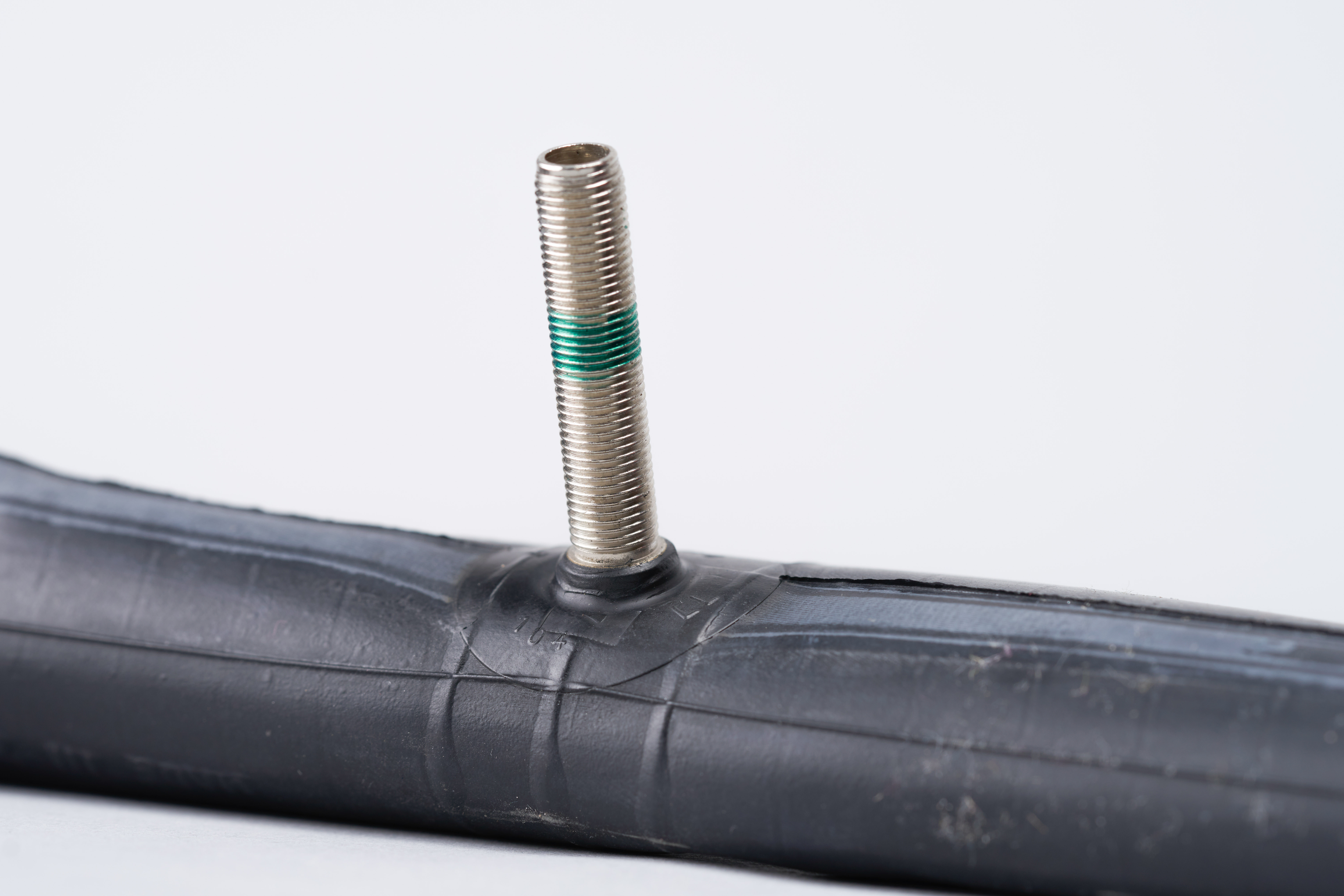 Schrader valve against a white background
Schrader valve against a white background
1.3. Dunlop/Woods Valve: A Classic Design
Dunlop/Woods valves are mostly found on older or Dutch-style bikes and use a similar core to Presta valves but without a threaded exterior. They are increasingly rare on modern bikes.
- Benefits: Simple design and easy to replace valve cores.
- Drawbacks: Not suitable for high pressures and can be less reliable.
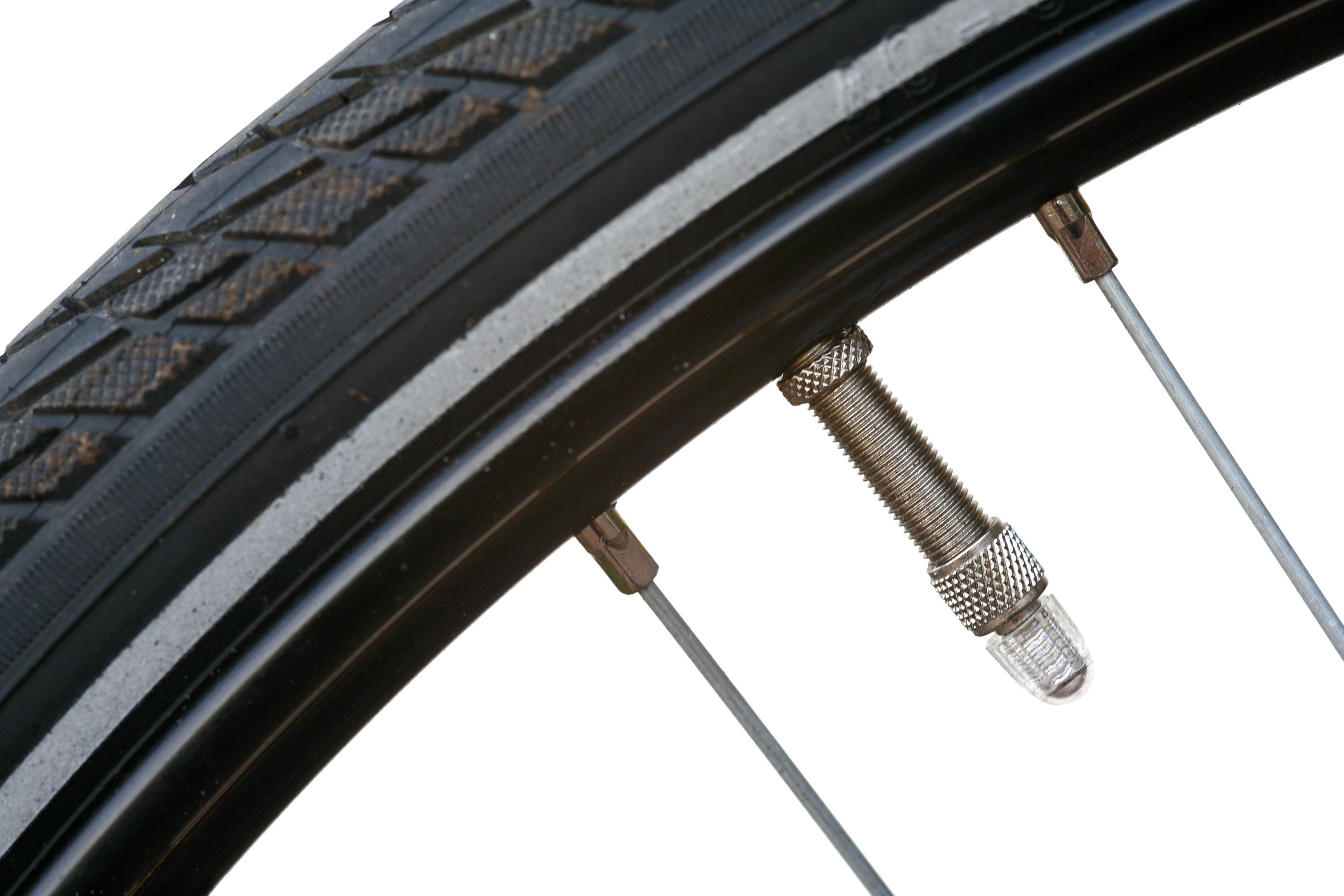 Dunlop valve against a white background
Dunlop valve against a white background
2. What Tools Do I Need To Inflate My Road Bike Tyres?
Having the right tools makes tyre inflation quick and easy. A good quality pump and a pressure gauge are essential for maintaining optimal tyre pressure, so ensure you have a compatible pump for your valve type, and consider a portable pump for on-the-go adjustments.
2.1. Track Pumps: The Home Mechanic’s Essential
Track pumps, also known as floor pumps, are designed for efficient inflation at home. They feature a gauge to measure pressure accurately and a long barrel to pump air quickly.
- Key Features: Pressure gauge, stable base, and ergonomic handle.
- Benefits: Easy to use and provides accurate pressure readings.
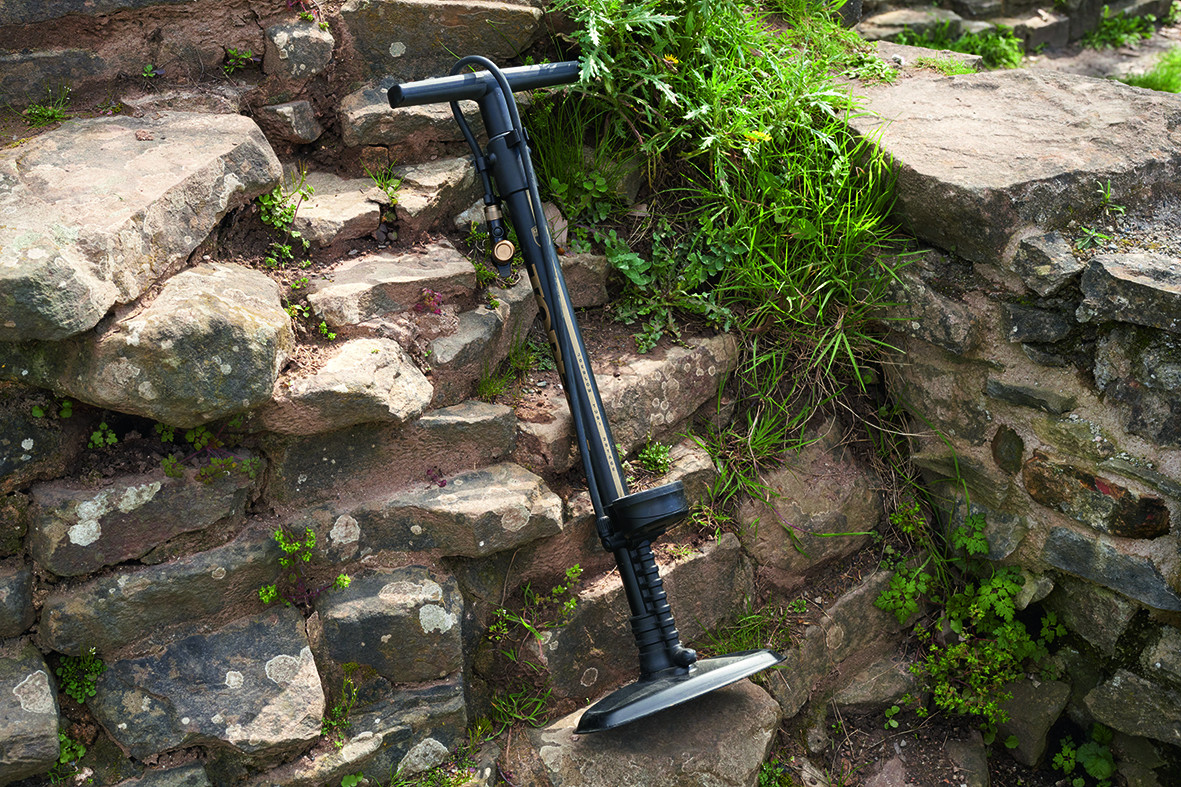 Topeak Tubi 2Stage
Topeak Tubi 2Stage
2.2. Mini Pumps: Portable Inflation Solutions
Mini pumps are compact and lightweight, ideal for carrying on rides. While they may require more effort to use, they are a lifesaver when you experience a flat tyre on the road.
- Key Features: Compact size, lightweight, and often mountable to the bike frame.
- Benefits: Portable and essential for emergency repairs.
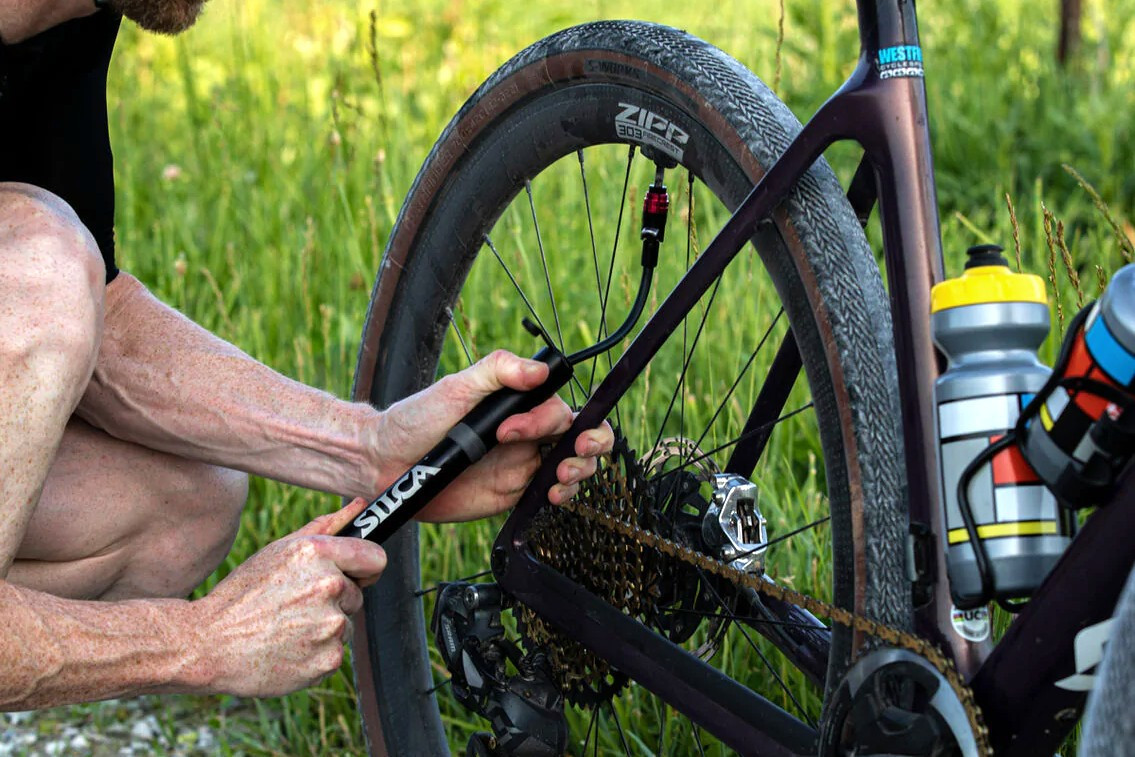 Silca Gravelero gravel mini-pump
Silca Gravelero gravel mini-pump
2.3. CO2 Inflators: Quick and Convenient
CO2 inflators use compressed carbon dioxide to quickly inflate tyres. They are small and lightweight, making them a popular choice for racers and those looking for fast inflation, but remember that CO2 can permeate tubes more quickly than air, so it’s best to reinflate with a standard pump when possible.
- Key Features: Rapid inflation and lightweight.
- Benefits: Fast and easy to use in emergency situations.
- Drawbacks: CO2 permeates tubes faster and requires purchasing cartridges.
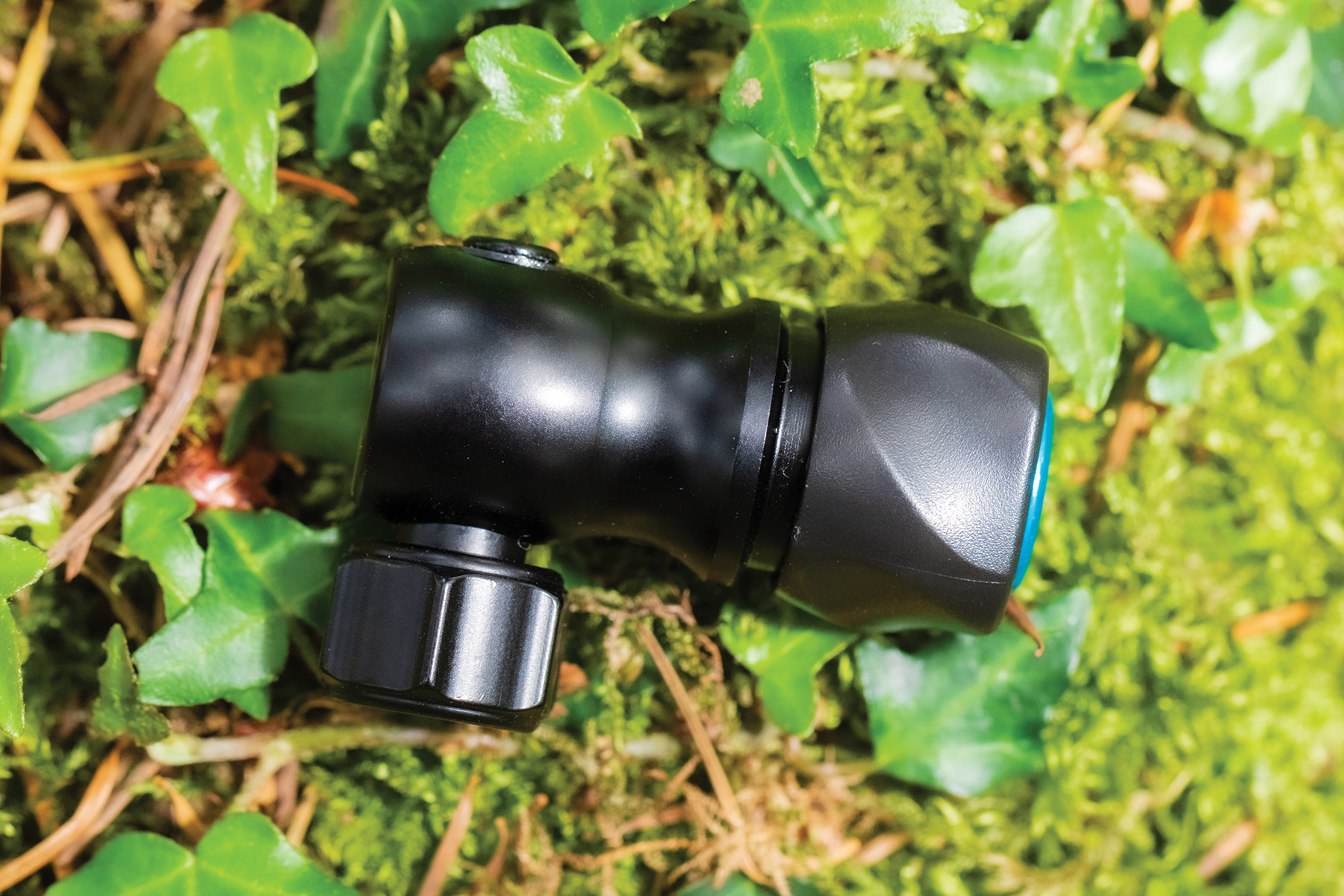 LifeLine CNC co2 inflators
LifeLine CNC co2 inflators
2.4. Digital Pressure Gauges: Precision at Your Fingertips
Digital pressure gauges provide accurate readings, ensuring your tyres are inflated to the precise pressure you desire. This is particularly useful for optimizing performance and comfort.
- Key Features: High accuracy and easy-to-read display.
- Benefits: Ensures precise tyre pressure for optimal riding conditions.
3. What Is The Best Way To Inflate Road Bike Tyres?
Follow these steps to inflate your road bike tyres correctly:
3.1. Preparing the Valve
Remove the valve cap and, if using a Presta valve, unscrew the locking nut. Gently depress the valve to ensure it’s not stuck.
 Inflating a Presta valve
Inflating a Presta valve
3.2. Attaching the Pump Head
Securely attach the pump head to the valve. Ensure it is firmly in place to create an airtight seal. For Presta valves, be gentle to avoid bending the valve.
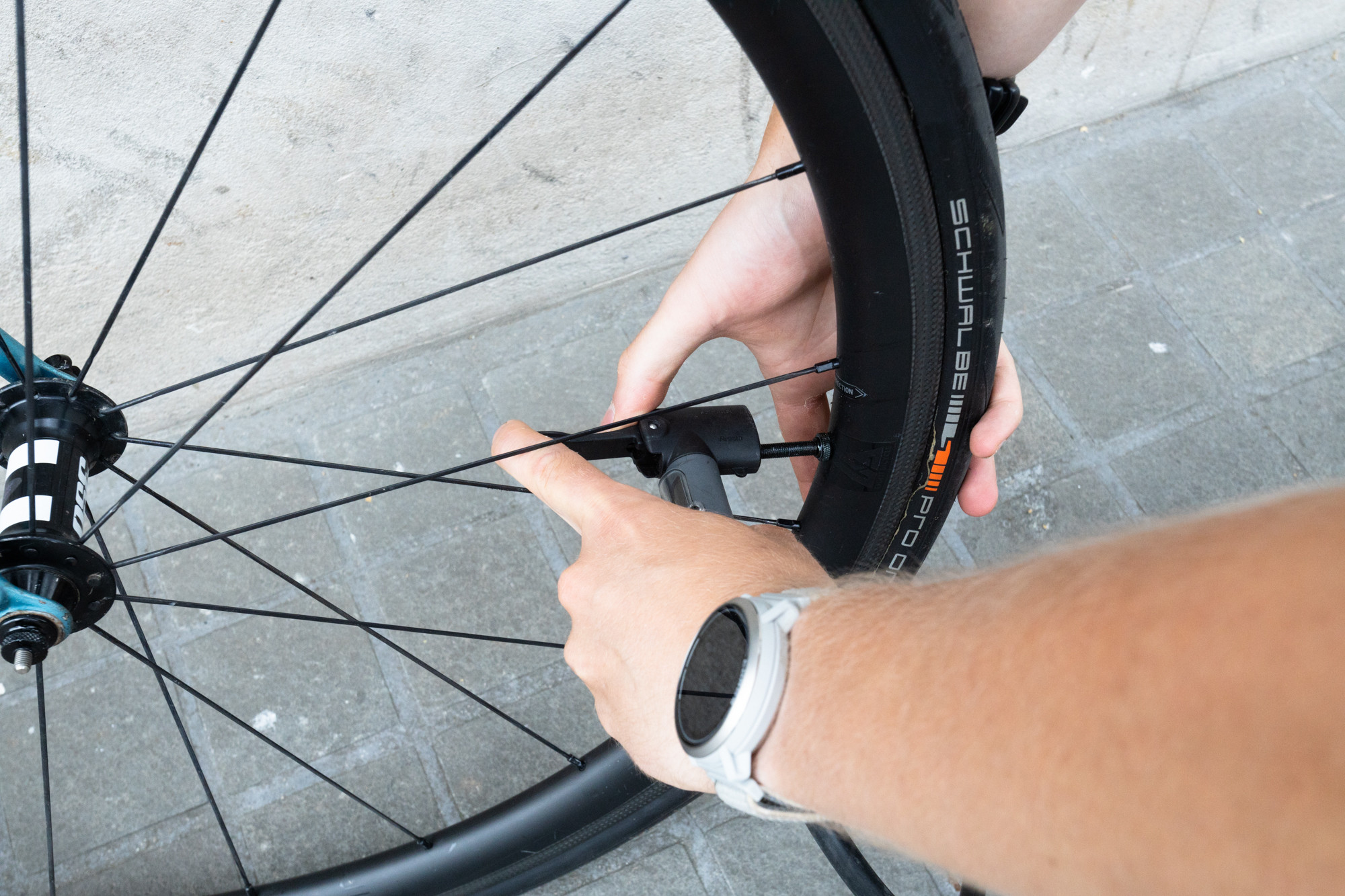 Inflating a Presta valve
Inflating a Presta valve
3.3. Inflating the Tyre
Begin pumping, using smooth, full strokes. Watch the pressure gauge to ensure you reach the desired pressure.
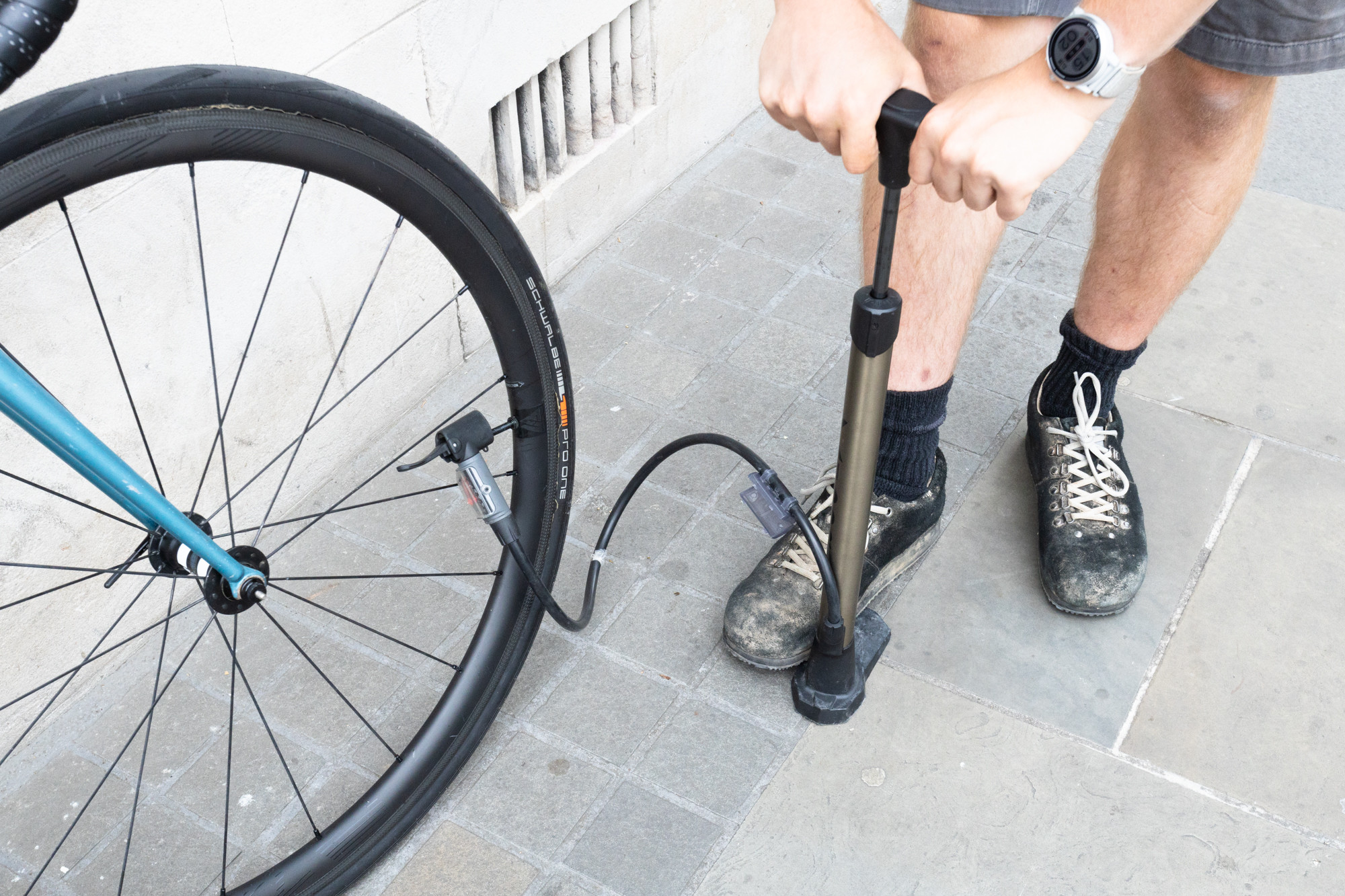 Inflating a Presta valve
Inflating a Presta valve
3.4. Detaching the Pump Head
Carefully detach the pump head from the valve. If using a Presta valve, screw the locking nut back on and replace the valve cap.
 Inflating a Presta valve
Inflating a Presta valve
3.5. Final Check
Double-check the pressure with a gauge to ensure accuracy and inspect the tyre for any signs of damage.
4. What Is The Correct Tyre Pressure For A Road Bike?
Achieving optimal tyre pressure is crucial for performance, comfort, and safety. Tyre pressure is measured in pounds per square inch (PSI) or bar, and the ideal pressure depends on various factors, including tyre size, rider weight, and riding conditions.
4.1. Understanding Tyre Pressure Recommendations
Most tyres have a recommended pressure range printed on the sidewall. These ranges provide a guideline, but the optimal pressure may vary based on individual preferences and conditions.
 Vittoria Corsa Pro tyre minimum and maximum tyre pressures
Vittoria Corsa Pro tyre minimum and maximum tyre pressures
4.2. Factors Affecting Tyre Pressure
- Rider Weight: Heavier riders generally require higher tyre pressures.
- Tyre Size: Wider tyres can be run at lower pressures for increased comfort.
- Road Conditions: Rough roads may benefit from slightly lower pressures to improve shock absorption.
4.3. General Pressure Guidelines
| Tyre Width (mm) | Rider Weight (lbs) | Recommended Pressure (PSI) |
|---|---|---|
| 23 | 150 | 110-120 |
| 25 | 150 | 100-110 |
| 28 | 150 | 90-100 |
| 23 | 200 | 120-130 |
| 25 | 200 | 110-120 |
| 28 | 200 | 100-110 |
4.4. Fine-Tuning for Comfort and Performance
Experiment with small pressure adjustments to find the sweet spot that balances comfort, grip, and rolling resistance. A few PSI can make a noticeable difference in ride quality, and according to research from the Motorcycle Safety Foundation (MSF), in July 2025, regular tyre maintenance provides rider safety.
5. What Type of Pump Is Suitable For Road Bike Tyres?
Choosing the right pump can make tyre inflation easier and more efficient. Consider the type of riding you do and where you’ll be inflating your tyres.
5.1. Track Pumps: The Ideal Home Solution
Track pumps are a must-have for any serious cyclist. They offer stability, accuracy, and efficiency for inflating tyres at home, so look for a pump with a large gauge and a versatile head that fits both Presta and Schrader valves.
- Benefits: High accuracy, stable design, and efficient inflation.
- Drawbacks: Not portable for on-the-road use.
5.2. Mini Pumps: Essential for Roadside Repairs
Mini pumps are compact and lightweight, making them perfect for carrying on rides. They are a reliable backup when you need to fix a flat away from home, so choose a pump with a hose to reduce stress on the valve.
- Benefits: Portable, lightweight, and essential for emergency repairs.
- Drawbacks: Requires more effort and may not be as accurate as track pumps.
 Silca Gravelero gravel mini-pump
Silca Gravelero gravel mini-pump
5.3. CO2 Inflators: Quick Inflation for Race Day
CO2 inflators provide rapid inflation, making them a favorite among racers and performance-oriented cyclists. However, they are not as economical as traditional pumps and require purchasing cartridges, so always carry a few extra cartridges and practice using the inflator before race day.
- Benefits: Extremely fast inflation and lightweight.
- Drawbacks: Requires CO2 cartridges and can be less economical for regular use.
6. How Do I Maintain My Road Bike Tyres?
Proper tyre maintenance extends the life of your tyres, improves performance, and enhances safety. Regular inspections and cleaning can prevent premature wear and damage.
6.1. Regular Inspections
Check your tyres regularly for cuts, embedded debris, and uneven wear. Remove any sharp objects to prevent punctures, so pay close attention to the tyre sidewalls for any signs of damage.
6.2. Cleaning Your Tyres
Keep your tyres clean to maintain grip and prevent damage. Use a mild soap and water solution to remove dirt and grime.
6.3. Proper Storage
Store your bike in a cool, dry place away from direct sunlight. UV rays can degrade the rubber and cause the tyres to crack.
6.4. Replacing Worn Tyres
Replace your tyres when the tread is worn or the sidewalls show signs of cracking. Worn tyres are more prone to punctures and can compromise handling.
7. What Are The Common Problems When Inflating Road Bike Tyres?
Encountering issues while inflating tyres is common, but knowing how to troubleshoot can save you time and frustration.
7.1. Pump Not Engaging the Valve
Ensure the pump head is properly aligned with the valve and securely attached. Try readjusting the pump head or using a different pump.
7.2. Air Leaking from the Valve
Check the valve core for damage and ensure it is tightened properly. If the valve core is removable, try replacing it.
7.3. Tyre Not Inflating
Inspect the tyre for punctures or tears. If the tyre is intact, check the rim for damage that may be preventing a proper seal.
7.4. Difficulty Reaching High Pressure
Ensure the pump is designed for high-pressure inflation. Use smooth, full strokes and check the pump for any leaks.
8. What Is The Relationship Between Tyre Pressure, Rolling Resistance and Comfort?
Understanding the science behind tyre pressure can help you optimize your riding experience, so rolling resistance, comfort, and grip are all affected by tyre pressure.
8.1. Rolling Resistance
Higher tyre pressures generally reduce rolling resistance, making it easier to maintain speed. However, extremely high pressures can reduce grip and comfort.
8.2. Comfort
Lower tyre pressures increase comfort by allowing the tyre to absorb road vibrations. This is particularly beneficial on rough roads.
8.3. Grip
Optimal grip is achieved when the tyre can conform to the road surface. Slightly lower pressures can improve grip, especially in wet or slippery conditions.
8.4. Finding the Balance
Experiment with different tyre pressures to find the balance that works best for your riding style and conditions. A few PSI can make a significant difference, so according to research from the American Motorcyclist Association (AMA), in June 2024, tyre pressure is key.
9. What Are Tubeless Tyres And How Do They Work?
Tubeless tyres offer several advantages over traditional tube-type tyres, and they eliminate the risk of pinch flats and can be run at lower pressures for improved comfort and grip.
9.1. Benefits of Tubeless Tyres
- Puncture Resistance: Sealant automatically seals small punctures.
- Lower Pressure: Improved comfort and grip.
- Reduced Rolling Resistance: Enhanced performance on rough surfaces.
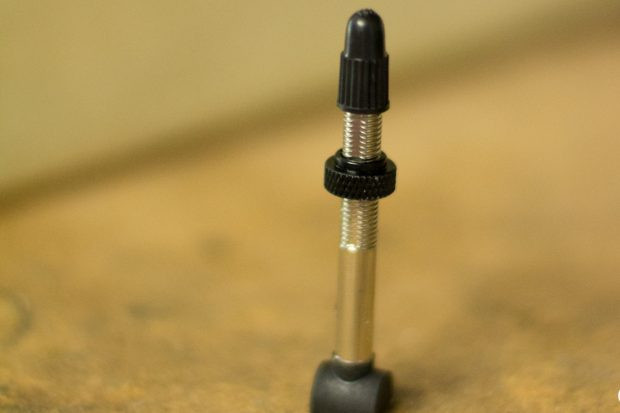 The RX830s come with long tubeless valves
The RX830s come with long tubeless valves
9.2. Setting Up Tubeless Tyres
Setting up tubeless tyres requires a specific rim, tyre, and sealant. The process involves mounting the tyre, adding sealant, and inflating the tyre to create an airtight seal.
9.3. Maintaining Tubeless Tyres
Check the sealant level regularly and replenish as needed. Inspect the tyre for damage and replace if necessary.
10. Frequently Asked Questions (FAQ) About Road Bike Tyre Inflation
Here are some common questions and answers about inflating road bike tyres:
10.1. How Often Should I Inflate My Tyres?
Check your tyre pressure before every ride to ensure optimal performance and safety.
10.2. Can I Use a Car Air Compressor to Inflate My Bike Tyres?
Yes, if you have a Schrader valve. However, be cautious not to overinflate the tyre, as car compressors can deliver air quickly.
10.3. What Is the Best Way to Store My Bike Tyres?
Store your bike in a cool, dry place away from direct sunlight to prevent the rubber from degrading.
10.4. How Do I Know If My Tyres Are Worn Out?
Check for worn tread, cuts, and sidewall damage. Replace the tyres when they show signs of significant wear.
10.5. Can I Mix Different Tyre Pressures on the Front and Rear Tyres?
Yes, many riders prefer to run slightly lower pressure in the front tyre for increased comfort and grip.
10.6. What Does PSI Stand For?
PSI stands for pounds per square inch, which is a unit of pressure measurement.
10.7. Is It Okay to Ride with Slightly Underinflated Tyres?
Riding with underinflated tyres can increase rolling resistance and the risk of pinch flats. Inflate your tyres to the recommended pressure for the best performance and safety.
10.8. How Do I Fix a Flat Tyre on the Road?
Carry a mini pump, tyre levers, and a spare tube or patch kit. Follow a step-by-step guide to remove the wheel, replace the tube, and inflate the tyre.
10.9. What Is the Difference Between a Clincher and a Tubular Tyre?
Clincher tyres use an inner tube and hook onto the rim. Tubular tyres are glued to the rim and are typically used in racing.
10.10. How Do I Choose the Right Tyre Size for My Road Bike?
Check your bike’s specifications or consult with a bike shop to determine the correct tyre size. Ensure the tyre fits properly on the rim and does not interfere with the frame.
At usabikers.net, we’re dedicated to providing you with the information and resources you need to enjoy your road biking adventures, so visit usabikers.net today to explore more articles, join our community forum, and gear up for your next ride. Address: 801 Sturgis Main St, Sturgis, SD 57785, United States. Phone: +1 (605) 347-2000. Website: usabikers.net.

